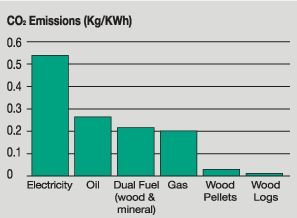

As a service to our customers we are providing this early version of the manuscript.
#Oolite growth rate diagram pdf#
This is a PDF file of an unedited manuscript that has been accepted for publication. Please cite this article as: Ghose, N.C., Chatterjee, N., Windley, B.F., Subaqueous early eruptive phase of the Late Aptian Rajmahal volcanism, India: evidence from volcaniclastic rocks, bentonite, black shales, and oolite, Geoscience Frontiers (2016), doi: 10.1016/j.gsf.2016.06.007. Subaqueous early eruptive phase of the Late Aptian Rajmahal volcanism, India: evidence from volcaniclastic rocks, bentonite, black shales, and oolite Alignment of the Rajmahal eruptive centers with a major N–S mid-Neoproterozoic lineament and the presence of a gravity high on the RVP suggest a tectonic control for the eruption of melts associated with the Kerguelen plume that was active in a post-Gondwana rift between India and Australia-Antarctica. The presence of grey and black shale/mudstone in the lower one-third of the succession across the entire Rajmahal basin provides unequivocal evidence of a shallow-marine continental shelf-type environment. Based on these observations, we conclude that the early phase of Rajmahal volcanism occurred under predominantly subaqueous conditions. Here, the presence of fine-grained tuffs, tuff breccia containing sideromelane shards and quenched texture, welded tuff breccia, peperite, shale/mudstone and oolite substantiates a subaqueous environment. In contrast, the northwestern sector of the RVP is devoid of felsic-intermediate rocks, and the volcaniclastic rocks are predominantly mafic (basaltic) in composition. On the other hand, partially melted siltstone xenoliths in enstatite-bearing basalts suggest that the enstatite-andesites originated through mixing of the upper crust with basaltic magma, crystallizing orthopyroxene at a pressure-temperature of ∼3 kb/1150 ☌. The rhyolites/dacites (>68 wt.%) are separated from the andesites (<60 wt.%) by a gap in silica content indicating their formation through upper crustal anatexis with only heat supplied by the basaltic magma. The pyroclastic rocks are largely felsic in composition, and comprise ignimbrite as well as coarse-grained tuff with lithic clasts, and tuff breccia with bombs, lapilli and ash that indicate explosive eruption of viscous rhyolitic magma. At the eastern margin and the north-central sector of the RVP, the volcanics in the lower part include rhyolites and dacites overlain by enstatite-bearing basalts and enstatite-andesites. The lower one-third of the Rajmahal volcanic succession contains thin layers of plant fossil-rich inter-trappean sedimentary rocks with pyroclasts, bentonite, grey and black shale/mudstone and oolite, whereas the upper two-thirds consist of sub-aerial fine-grained aphyric basalts with no inter-trappean material. The late Aptian (118–115 Ma) continental flood basalts of the Rajmahal Volcanic Province (RVP) are part of the Kerguelen Large Igneous Province, and constitute the uppermost part of the Gondwana Supergroup on the eastern Indian shield margin. Abstract of research paper on Earth and related environmental sciences, author of scientific article - Naresh C.


 0 kommentar(er)
0 kommentar(er)
